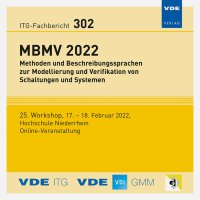A Scalable, Configurable and Programmable Vector Dot-Product Unit for Edge AI
Conference: MBMV 2022 - 25. Workshop MBMV
02/17/2022 - 02/18/2022 at online
Proceedings: ITG-Fb. 302: MBMV 2022
Pages: 9Language: englishTyp: PDF
Authors:
Prebeck, Sebastian; Ashok, Sathya; Vaddeboina, Mounika; Devarajegowda, Keerthikumara; Ecker, Wolfgang (Infineon Technologies AG, Munich, Germany)
Abstract:
Second generation artificial intelligence (AI) migrates inference related computations from cloud towards edge devices [19]. Due to increasingly sophisticated neural network (NN) architecture search, even more complex applications come into range for execution on the edge. This enables a significant drop in latency, power consumption and bandwidth, since data transmission to cloud becomes obsolete. We address challenges to enable edge platforms with computation hardware capable of dealing with more complex applications locally. For NN inferences in general, dot product operation is the most commonly and intensively used. Thus, defining a proper unit supporting the mentioned operation in an efficient way has huge impact. Between different applications the network hyperparameters may change, including the data formats of kernels and activations. Therefor, supporting a wide variety of data formats with the dot product unit, while keeping the area increase low, seems appealing. Additionally, the computational load varies dependent on the particular application, thus a scalable solution is desireable. Next to the configurability and programmability, area as well as power efficiency plays an important role. We propose a scalable, configurable and programmable vector dot product unit, targeting an optimized footprint for low power applications to overcome the challenges of second generation AI on edge devices. The proposed solution is supported by a Python-based HW generator, which enables the derivation of featured dot product units optimized for certain applications. It is developed with the assumption to be utilized as a standalone component as well as loosely or closely coupled component associated with a CPU instruction set extension.


